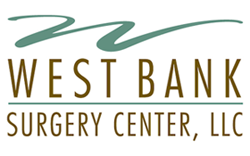Strabismus Surgery
Strabismus is a vision problem in which the eyes are not aligned properly and point in different directions. About four percent of all children in the United States have strabismus, but it can also develop later in life.
Both of your child’s eyes have six extraocular muscles controlling eye movements. If the muscles are too strong, it may cause the eye to turn in, turn out or rotate too high or low. If the eye muscles are too weak, it may mean that your child has a cranial nerve dysfunction affecting eye muscle movement.
With normal vision, both eyes look at the same place. The brain combines the pictures into a single, three-dimensional image, which gives depth perception. When your child’s eye is misaligned, the brain sees two different pictures. The brain ignores the image of the eye that is out of alignment and only sees the image from the aligned eye. This prevents depth perception.
In some children, strabismus can be corrected with eyeglasses. Other treatments include patching or blurring the aligned eye to improve the strength of the misaligned eye. If these initial treatments are not successful, corrective surgery may be recommended.
What Happens During Strabismus Surgery?
Your child’s surgeon will make a small incision in the clear membrane covering the white part of the eye or both eyes. Through this incision, the surgery is performed on the surface of the eye to eliminate the strabismus. The surgeon will tighten or loosen the appropriate extraocular muscles so the eyes will be aligned. The eye muscle will be shortened to strengthen it or will be moved back from its initial position to weaken it. The eyeball will not be affected and the small incisions are so small that there is rarely any visible scarring.
What Happens After Strabismus Surgery?
Most patients go home in one to two hours after the surgery and experience a rapid recovery. You will need to administer anti-inflammatory eye drops in your child’s eyes for a few weeks after the procedure to prevent infection. You will notice some bright red blood at the site of the incision, but this is similar to a bruise on the skin and will disappear within a few weeks.
Your child’s eyes may be sensitive, watery and swollen for several days, but you can talk with your doctor about any discomfort at the seven to 14 day post-op appointment. Your child may return to school about two weeks after surgery, and the dissolvable sutures will gradually disappear within six weeks. Although you should notice an improvement in eye alignment just a few days after surgery, the full results of the procedure may not be visible for four to six weeks.
The success rate for strabismus surgery is quite high in achieving binocular vision and cosmetic alignment.
